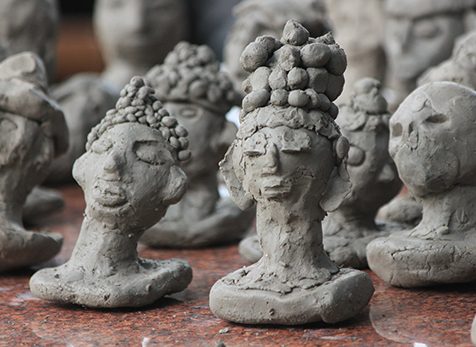

Aurangabad has been a meeting point of northern and southern India. Aurangabad district in present day Maharashtra state is a rare case whose story goes back to antiquity and which fortunately can be witnessed through the string of remains of each era that the region has borne.
Declared as world heritage sites by UNESCO since 1983 the paintings and sculptures of Ajanta and Ellora are considered masterpieces of Buddhist religious arts.
Nearest railway station – Aurangabad
Nearest airport – Aurangabad
Located amidst the Sahyadri Hills, these caves are known for beautiful paintings that date in the period between 200 BC and 650 AD.
A sense of appreciation for history, art, architecture & culture.


The paintings of Ajanta caves depict the life of Buddha and stories of his previous lives: Jataka Tales. Participants will visit the chemical unit of the Archeological Survey of India (ASI) that works towards restoring the paintings created with natural colours more than 1900 years ago! They will interact with historians and conservation architects to understand the past, present and the future of this UNESCO World Heritage Site.
Hailed as the most stupendous piece of sculpture ever executed in India, Kailasa temple in Ellora is a full-fledged freestanding monolithic temple carved out from a hill slope. Participants will turn detectives to find mythological stories carved in stone.
Aurangabad is dotted with remains of its long and rich history; from ancient water management systems that have survived 400 years to forts, palaces and ‘darwazas’ to the famed ‘Taj of the Deccan’ – Bibi-Ka- Maqbara – a beautiful edifice of the late Mughal period.

Locally known as ‘Kam Khuab’ meaning little dream – Himroo is a textile product famous in Aurangabad. Made from fabric of silk and cotton, these luxurious fabrics were mostly made for the royal families and nobles and are known for their bold colours and patterns.
At the Mahagami art centre in Aurangabad, participants will follow the trail of fibre to fabric. They will visit the Himroo and the Paithani handloom weaving center and watch weavers turn strands of fibre into colourful patterns and designs.
They will learn about organic dyes and appreciate the hard work and the skills required for hand-woven materials.

"Tell me, and I will forget. Show me and I may remember. Involve me, and I will understand. - Confucius"
If you would like to collaborate and participate in one of our experiential learning programmes then please complete this contact form below to get in touch.
Students Comments